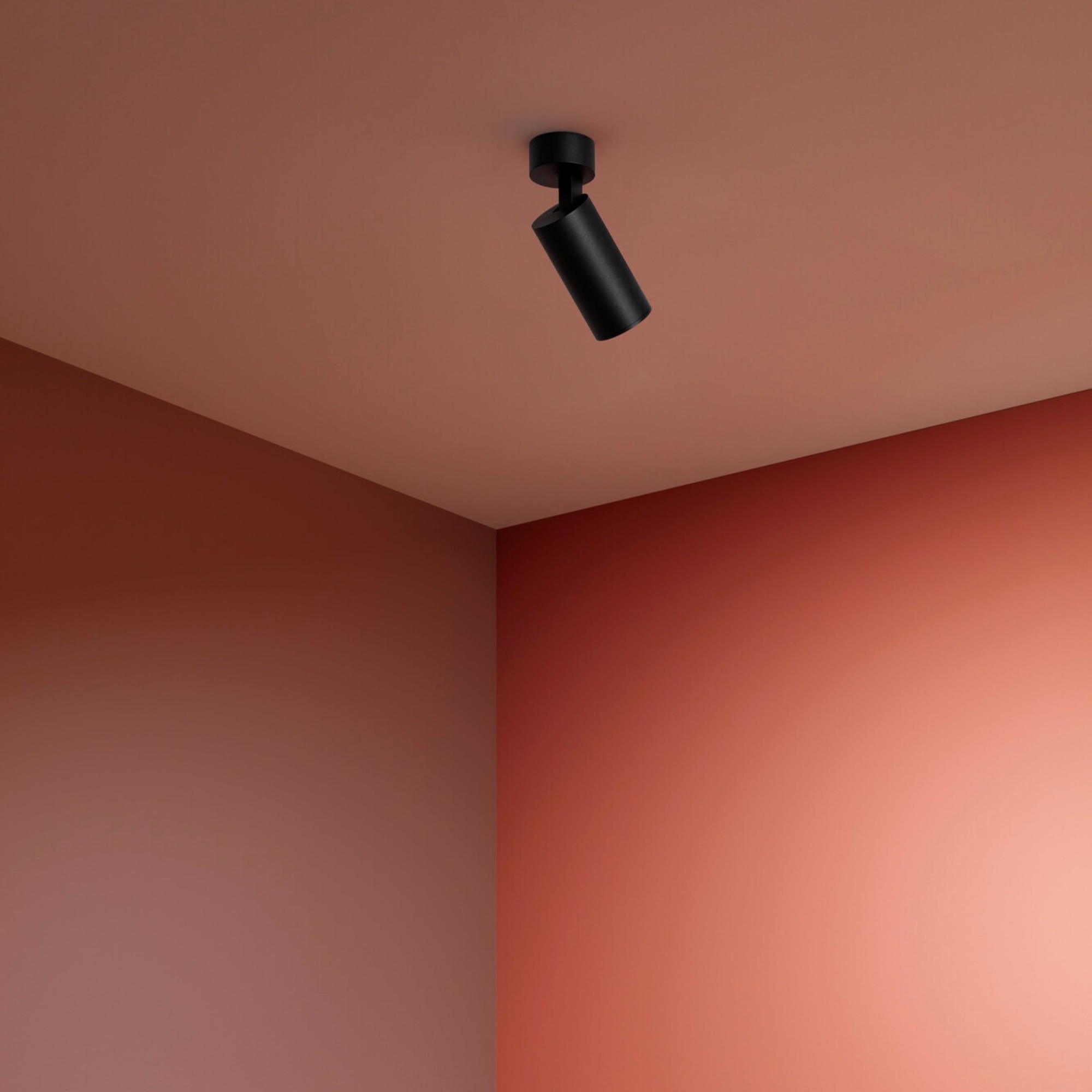Flickering lights can be anything from an irritating nuisance that is easily fixable to an electrical fire hazard that requires an electrician’s help. The key is knowing what is causing the issue so that you can fix it or react if there is a safety risk.
This guide explains what causes lights to flicker, how dangerous they are, and how to fix them.
Table of contents:
- Why are my lights flickering?
- Why do LED lights flicker?
- Why do my dimmable lights flicker?
- Why are my lights flickering in one room?
- Is a flickering light bulb dangerous?
Why are my lights flickering?
If you’re wondering, “What do flickering lights mean?” they can be caused by several factors, ranging from minor to more serious electrical problems. Some flickering lights are easy to fix, some require new parts, and others require an electrician. Here are some of the most common reasons your lights might flicker and how to fix a flickering light.
| Why are my lights flickering? | How to fix a flickering light | |
| Loose bulbs | If a bulb isn’t screwed in tightly, it loses contact with the socket, causing it to flicker. | To fix the flicking caused by a loose bulb, simply turn off the light and check if the bulb is securely screwed in. If not, tighten the bulb in the socket. |
| Faulty light bulbs | Old, traditional bulbs will flicker if they are reaching the end of their life. | If your light bulb is flickering because it’s faulty, replace it with a new one, preferably LED, so that you can benefit from an energy-efficient bulb; you won’t have to buy a new one for a while. |
| Voltage fluctuations | Sometimes, if a large appliance draws a lot of power on the same circuit, it can cause a brief voltage drop, causing your lights to flicker. | If your light is flickering when you plug in a particular appliance, you can call an electrician to check your home’s circuit capacity. |
| Wiring issues | Loose or damaged wires can cause disruptions in the electrical connections, leading to flickering. | If your light is flickering due to damaged or loose wiring, this is a potential fire hazard, and you should call a professional electrician immediately. |
| Faulty switch or dimmer | If your light switch is broken or a dimmer switch is incompatible with your bulb type, this combination can cause flickering. | Faulty light switches or dimmers that cause your lights to flicker must be replaced. |
| Overloaded circuit | Too many appliances using the same circuit can also cause flickering due to an overloaded circuit breaker. | If your circuit can’t handle a certain number of appliances and it’s causing the lights to flicker, try spreading your appliances over different circuits or upgrade your electrical system. |
| Power grid issues | Flickering lights could also indicate an issue with your utility company’s electrical supply to your property. | If you suspect your lights are flickering due to a power grid issue, check with your neighbours to see if they are experiencing similar problems. If so, contact your utility company to check for an issue or planned work. |
Why do LED lights flicker?
If you have LED lights and they’re flickering, the cause could be one of the above. If not, it could be one of these issues unique to LED lights and how to fix them.
| Why do LED lights flicker? | How to fix flickering LED lights | |
| Incompatible dimmer switch | Not all dimmers are designed to work with LED bulbs. Older dimmer switches, intended for traditional bulbs, may not provide consistent voltage to LED lights, causing flickering. | If you are trying to dim your LED lights and they are flickering, an easy fix is to check if the dimmer switch is compatible with LED lights, and if it’s not, replace it. |
| Poor quality LEDs | Low-quality or cheap LED bulbs often have poorly designed internal drivers regulating the electrical current. After a time, they can cause flickering, especially under an inconsistent power supply. | Similarly, if your LED bulbs are flickering because they are of poor quality, replace them with high-quality ones from a reputable brand. |
| Driver issues | LED lights use a driver (an electrical component) to convert incoming power to a usable form. If the driver is faulty or incompatible, flickering can occur. | Again, if it’s a malfunctioning driver that’s causing the flickering, replace the driver with a higher-quality driver. |
| Power supply frequency | In some cases, the power supply’s frequency caused by inverters or transformers doesn’t match what the LED requires, which can cause visible flickering. | If your LEDs aren’t compatible with your specific power frequency, replace your LED bulbs with ones that are or install a compatible transformer. |
Already lightly touched upon, if you have dimmable lights and they’re flickering, and none of the above is the cause, they could be flickering because of one of the following reasons.
| Cause | Fix | |
| Incompatible dimmer switches | Most traditional dimmer switchers are designed for traditional bulbs, but if you have LED lights, using traditional dimmer switches with them will cause flickering when turned to a low setting. | To fix this issue, check if your dimmer is marked LED-compatible or supports the specific bulb type you’re using and replace the dimmer switch or bulb to be compatible. |
| Non-dimmable bulbs | Not all bulbs are designed to dim. Non-dimmable LED bulbs used with a dimmer switch can cause flickering. | To ensure this isn’t an issue, use dimmable bulbs. |
| The dimmer is set too low | If the dimmer is set too low, some bulbs (especially LEDs) might not receive enough power to maintain a steady output, causing flickering. | To fix this issue, check your dimmer’s minimum load adjustment and set it correctly. |
| Overloaded dimmer switch | Each dimmer has a maximum wattage capacity. If the total wattage of the bulbs exceeds the dimmer’s rating, it may flicker. | To fix this issue, check your dimmer’s wattage limit and ensure the total bulb wattage stays within this range. If needed, upgrade to a higher-capacity dimmer. |
Why are my lights flickering in one room?
If your lights are flickering in just one room, the issue is likely localised to that room’s electrical circuit, light fixtures, or switches. If the issue isn’t one of the above, here are some additional causes and solutions for localised light flickering.
| Cause | Fix | |
| Faulty light fixture | The fixture in a particular room could have a loose wire, a bad connection or a failing component. | Check the light fixture for visible issues. If unsure, replace the fixture or consult an electrician. |
| Loose or damaged wire | A loose connection in the circuit, at the switch or within the room’s junction box can interrupt power flow, causing flickering. | To fix, inspect the light switch and wiring connections. If you’re comfortable with doing so; otherwise, contact an electrician. |
| Problem with the room’s circuit breaker | A loose or failing breaker can cause an inconsistent power supply to a specific room. | To fix this issue, check the breaker panel for tripped breakers. If the problem persists, you may need an electrician to replace the circuit breaker. |
| Faulty or ageing wiring in the room | Older homes may have ageing or degraded wiring, leading to intermittent power issues in one area, a serious safety concern. | Get an electrician to inspect and replace old or damaged wiring immediately. |
Is a flickering light bulb dangerous?
Depending on the cause, a flickering light bulb can be dangerous. Once you have identified the issue, act according to its severity. While some flickering issues are harmless and easy to fix, others could indicate a serious electrical problem.
Harmless light bulb flickering
If your bulb is loose, or you have incompatible bulbs and dimmer switches or old or faulty bulbs causing flickering, these issues are easily fixable and do not pose a serious electrical threat. But if you’re wondering, “When should I worry if my lights flicker?” Read below to know when a flickering bulb could be dangerous.
Dangerous flickering light bulbs
- A loose or damaged light fixture, outlet, or circuit wire is a fire hazard. An electrician should address it immediately.
- An overloaded circuit can also lead to fires.
- If a particular appliance causes a voltage fluctuation, prolonged voltage instability can damage electronics and lead to overheated components.
- A worn-out or defective light switch or internal damage in a fixture can result in inconsistent power delivery and is a potential safety risk.
- If your wiring is arcing (sparking caused by a loose connection), this can lead to overheating and fires. Look out for buzzing, a burning smell and visible sparks.
What to do if you’re concerned
If the flickering is random, frequent and accompanied by buzzing, crackling sounds, burning smells, visible sparks or heat, turn off the affected light and circuit immediately at the circuit breaker. If the flickering persists or you suspect a wiring or circuit issue, contact an electrician immediately.
LED bulbs and switches at Moonlight Design
Flickering lights can be caused by many issues, some with easy fixes and others needing to be taken more seriously. If you have any concerns about safety or fire hazards regarding flickering lights, always contact an electrician immediately.
But, if the flickering light issue is less serious, we can help get the right equipment and lighting to fix your irritating flickering light here at Moonlight Design.
Discover our complete collection of LED bulbs and switches if you need a bulb or switch replaced. Find regular and LED-compatible dimmer switches and bulbs in every shape and size you require today! Or, if you need to replace an old and tired light, shop our range of indoor lights at Moonlight Design.
Related blogs:




Leave a comment
This site is protected by hCaptcha and the hCaptcha Privacy Policy and Terms of Service apply.